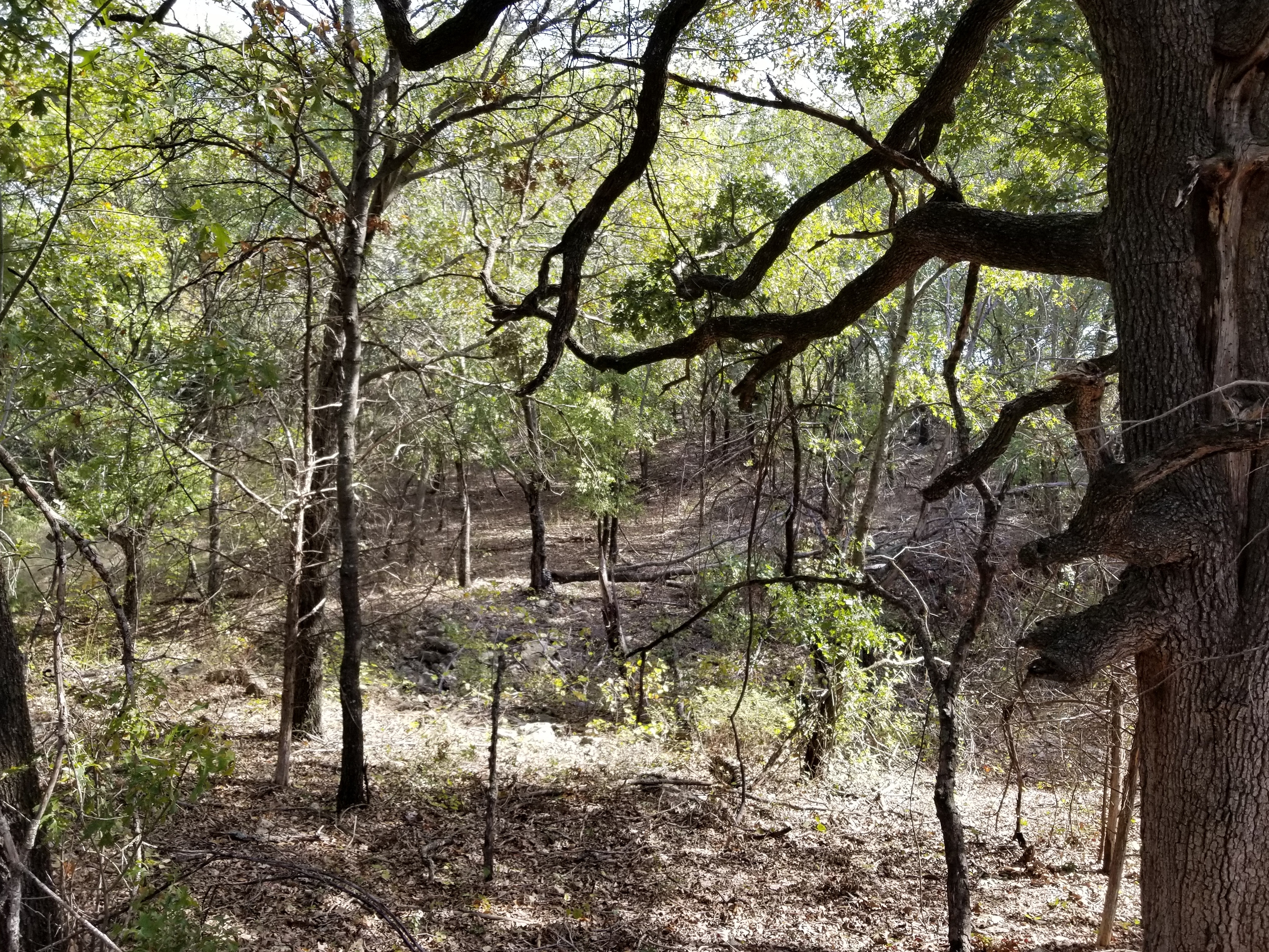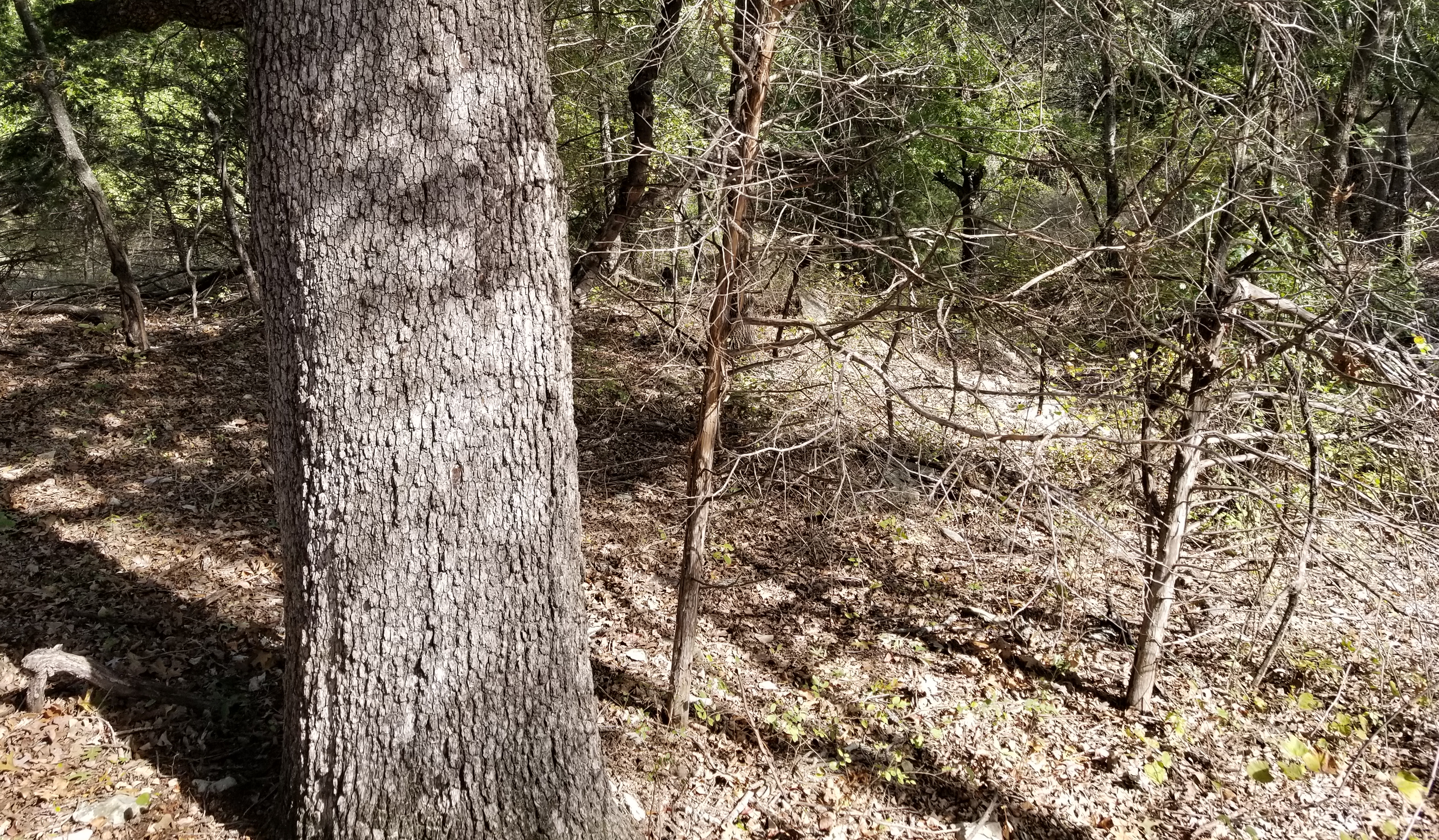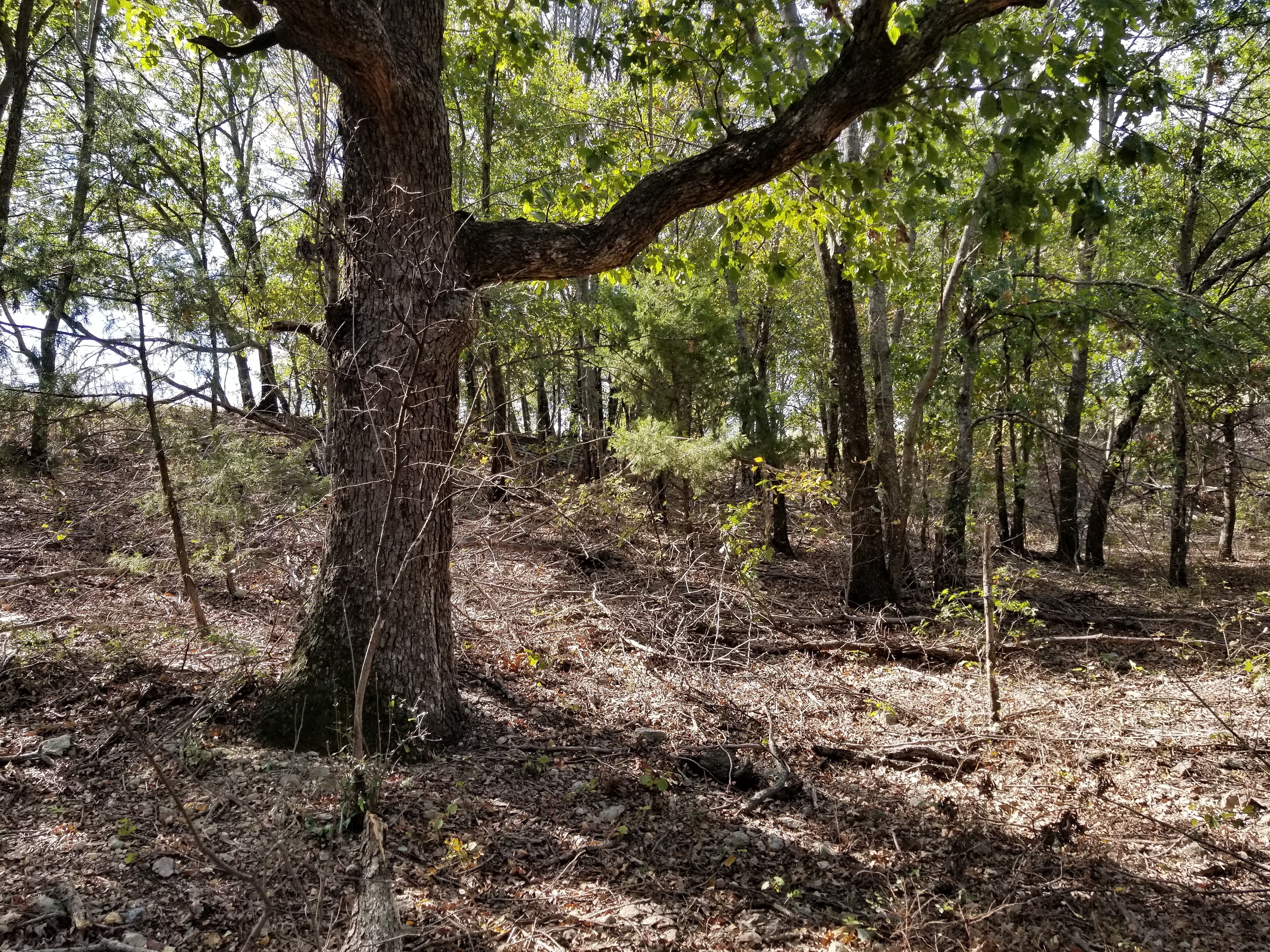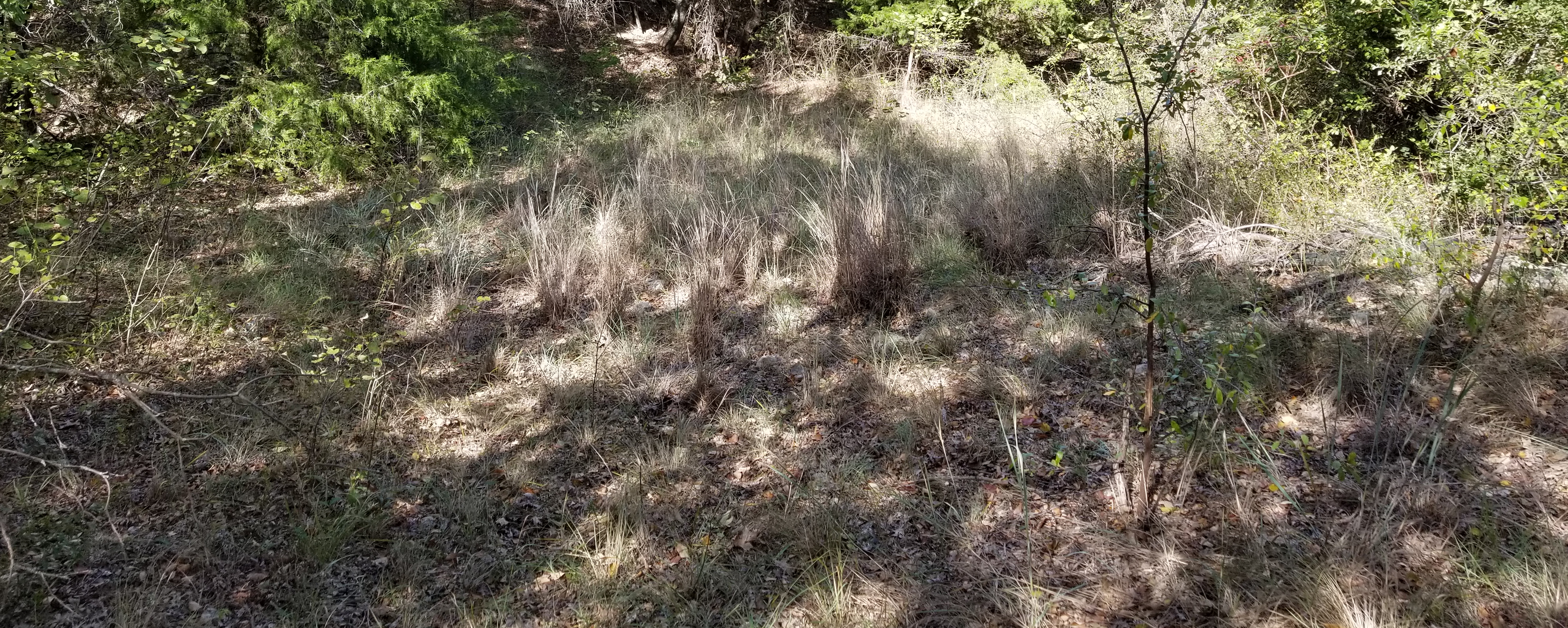
Oak savanna with encroaching brush
A previous post provides some context to the following discussion but isn’t required.
Landscapes provide lots of information regarding their current and historical status. We just have to learn to listen - or see.

The big oak on the right of the above image has no lower limbs, nor does it have recent burn scars. It does have a large lightning scar that comes down to about 6 feet from the base. This tree occurs near the head of a small hollow, high on the slope, just a few feet inside the edge of the timber. Much of the under-story is pretty clear, which is unusual for this area. In most sites in the timber, visibility is less than fifty feet, but one can easily see 200 or more here. Very little herbaceous vegetation is present with the exception of a prairie opening farther down-slope. This all suggests that recent prescribed burns are having an impact on the under-story. However, the lack of herbaceous vegetation still indicates close to 100% canopy coverage.


There is an abundance of basal burn scars on the ash and other smaller hardwoods. These are a result of recent fires within the last 10 years. Fire rarely kills a hardwood tree outright - it may top kill one but that tree will re-sprout. Fire does weaken trees and makes them more susceptible to disease.


Where the overhead canopy hasn’t closed completely, native prairie species persist, again suggesting that the vegetation was much different in the past.
 Eastern Redcedar seedling growing in the understory. It’s about time for another fire.
Eastern Redcedar seedling growing in the understory. It’s about time for another fire.
 Oak savanna with encroaching brush. Note the fire damage near base of cedars.
Oak savanna with encroaching brush. Note the fire damage near base of cedars.
The oak savanna site is topographically similar to the first but has a more western aspect as opposed to a north aspect for the first. That probably results in it being a little drier and warmer. Trees have been slower to come in here but are well on their way. Evidence of fire can be seen in the dead limbs near the base of the cedars. Fires have damaged them some but certainly haven’t killed them. Near the horizon in the image, the historical vegetation was likely Cross Timbers.
 Bracket fungi on an oak stump
Bracket fungi on an oak stump
Fire injures and weakens trees which allows fungi to colonize and eventually kill the trees. With frequent return intervals future fires may take care of things before the fungi get around to it.
The plants are telling a story about the fire and vegetation history of these slope sites. The original vegetation would likely have been some sort of oak savanna with widely scattered, large trees. Herbaceous vegetation would have extended up to the shade line of the trees.
Fire prunes the lower limbs on fire tolerant species, the oaks in this case. The remaining limbs are high enough to avoid the heat of the fire. The high limbs on the two large oaks suggest that they encountered fires regularly.
The cedars and abundance of smaller trees indicate that fire had been excluded for an extended period. Cedars don’t like fire at all and will only survive in the deepest draws and steepest bluffs when fire is prevalent on the landscape. Ash is also intolerant of fire. Shumard Oaks will tolerate some fire, but often sustain burn scars at the base which makes them more susceptible to disease and the next fire. Other than the height of the limbs, neither the Post Oak nor the Chinkapin Oak show any evidence of fire impacts.
The time frame for when these changes took place is harder to deduce. Other than knowing that much larger trees are much older than others on the same site, it’s hard to pin actual ages to any of them. Trees grow at much different rates depending on the site - so knowing the size and age of a species of tree on one site is of no value for aging trees on another site. These sites aren’t ideal so these big oaks could be quite a lot older than they appear. Old aerial photos of this site come in handy here. Images from 1939-1940 show very little woody vegetation on these sites with only a few large trees.
What does all of this mean to a land manager? If we know that many of the sites were originally savanna, then savannas are the most likely outcome that we should manage for. From a very basic production standpoint - there’s land that should be grazeable but isn’t because of woody plant encroachment. On the other hand, if the historical context indicates that a site was originally forested it might make more sense to manage toward that and convert to a different economic enterprise such as hunting for that site.
Knowing the ecological history and the current status of a landscape promotes the implementation of sound management.
Think of it like this: Who would you rather have performing your heart surgery - the guy who couldn’t be bothered to learn the names of the organs in the body, or the trained surgeon who not only knows all the names, but how each of them ties together and why each is important.
A land manager who can’t be bothered to learn the names of many of the plants on the property he manages, and what they are telling him about his management, is likely to achieve only limited success.